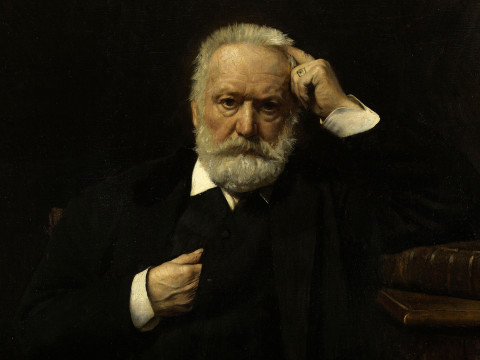
Five artists’ houses that celebrate their owners’ creativity
Published on 27 March 2025
From the desert of New Mexico to the clifftops of Guernsey, artists have found inspiration in all sorts of places. Here are five artist houses that are an extension of their owners' artistic expression.

1. Georgia O'Keeffe
Home and Studio in Abiquiú, New Mexico
The pioneering American artist bought a vast hilltop site in Abiquiú, New Mexico, in 1945 which reflected a blend of Native American and Spanish Colonial building styles. The large windows offered views of the canyons and desert landscape.
Georgia O’Keeffe furnished the property with mid-century modern pieces and decorated it with her treasured collection of rocks, skulls, and bones. Items like these are reminiscent of works like the painting Summer Days, where an animal skull and flowers float suspended above a barren desert.

2. Victor Hugo
Hauteville House in Saint Peter Port, Guernsey
While in exile from France, Victor Hugo settled in Guernsey and acquired Hauteville House in 1856. He completely renovated it to his own design, including adding a ‘lookout’ to the top-floor with panoramic views of the sea, which he used for writing and drawing.
Hugo dedicated a huge amount of time decorating the house to his own design. Turning the house into a work of art in itself, he made drawings for the large fireplace in the dining room, drew and painted directly onto picture frames and panelling, and incorporated objects from around the world.

3. Frida Kahlo
La Casa Azul in Mexico City, Mexico
The iconic Mexican painter, best known for her self-portraits, spent much of her life in La Casa Azul (The Blue House), Mexico City, first with her family and then with her husband Diego Rivera.
The outside of the house was painted in a vibrant cobalt blue, while inside, bright yellow dominated the kitchen and dining room, painted on tile floors, cabinets, and tables. The house and its lush gardens were filled with works by both artists, as well as folk art, sculpture, photos, books and furnishings that were a source of inspiration for Frida.

4. Vanessa Bell
Charleston in Firle, England
In 1916, the painter Vanessa Bell and her lover Duncan Grant moved to Charleston and immediately began painting every surface in the farmhouse, transforming it into a living work of art. The walls, doors, fireplaces, fabrics, and ceramics reflected their distinctive styles.
Over the years, Charleston became a gathering place for some of the 20th century’s most radical artists, writers and thinkers, known as the Bloomsbury Group. One of its members, art critic Roger Fry, redesigned the garden as a living painting, filled with sculpture by Vanessa’s son, Quentin Bell.

5. Salvador Dalí
House-Museum in Portlligat, Spain
In 1930, the renowned Surrealist Salvador Dalí settled in a small fisherman's hut in Portlligat, Spain, attracted by the landscape, the light and the isolation of the place.
With humble beginnings as a small fisherman's hut, over the next 40 years Dalí transformed the home into a labyrinthine structure with narrow corridors, slight level changes and blind passageways. There were surrealist elements everywhere, unexpected touches like a bear figure holding a lamp in the first lobby, a Pigeon Loft, and countless large eggs scattered around.

Visit the exhibition
see the drawings
Discover the imaginary worlds of Victor Hugo, one of France’s most famous writers, at this exhibition of his rarely-seen works on paper.
Related articles

3 things you didn't know about Victor Hugo
14 March 2025

Start here: Victor Hugo's drawings
21 February 2025